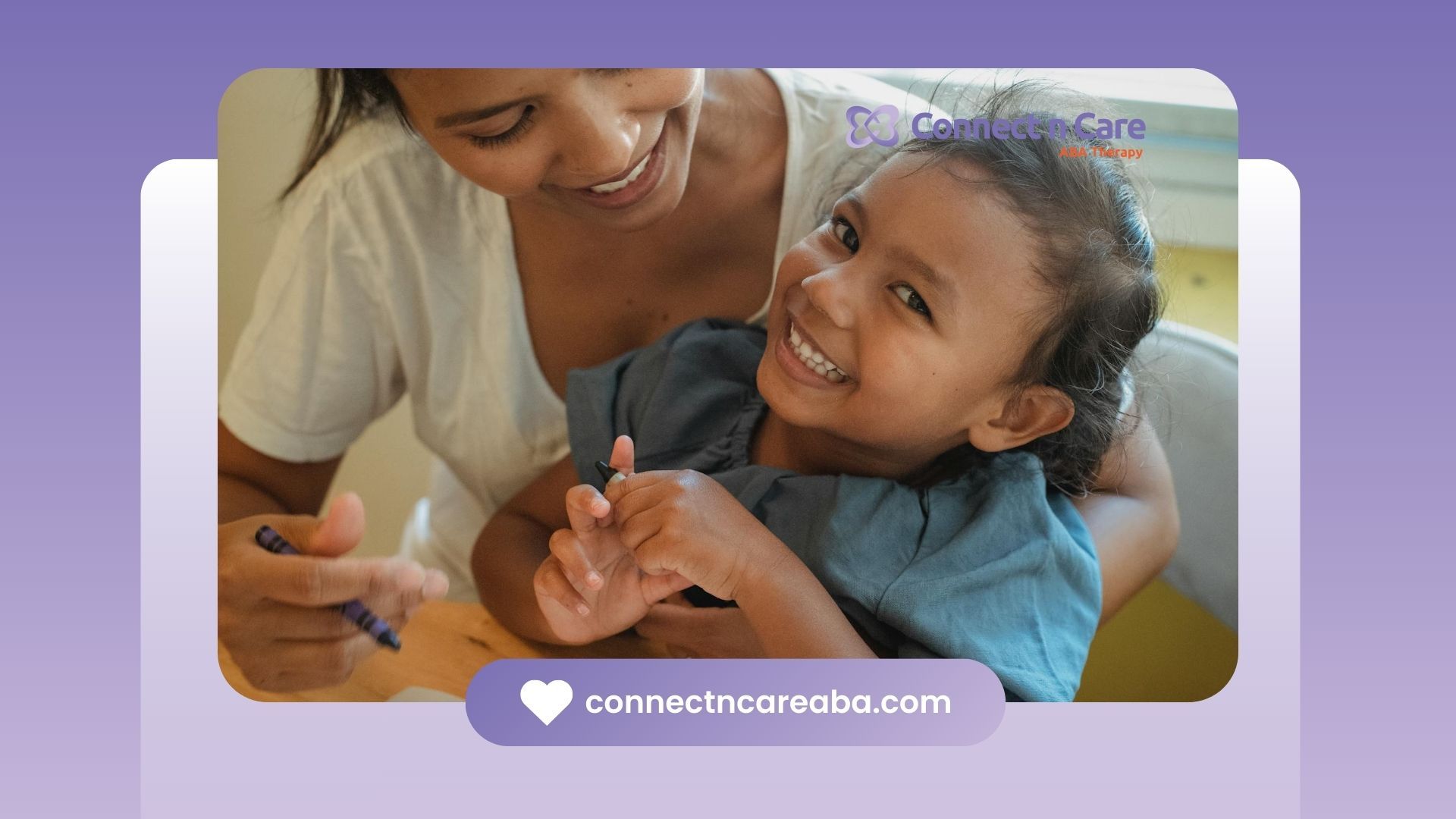Applied Behavior Analysis (ABA) therapy uses different strategies to change and improve behaviors. One important part of ABA is differential reinforcement, including different types of differential reinforcement. This focuses on how the type of behavior connects with their results, such as reinforcing behavior at a lower rate. By adjusting reinforcement, we can get the changes we want. In this blog, we will look at three types of differential reinforcement: DRI, DRO, and DRA. Each type has its own way to help change behaviors.
The Basics of Differential Reinforcement in ABA Therapy
Differential reinforcement is based on a simple idea. It rewards good behavior and lessens or removes bad behavior. Instead of just punishing negative actions, it promotes positive ones. This method fits well with the main ideas of ABA therapy. ABA therapy aims to understand and change behavior using specific methods.
In short, differential reinforcement teaches people better ways to engage with their environment and reach their goals. When therapists and caregivers regularly reward good actions, they help these actions to happen more often. This, in turn, can lower unwanted behaviors.
Defining DRI, DRO, and DRA
Differential reinforcement comes in different types. Each type focuses on different behavior aspects. One well-known type is Differential Reinforcement of Incompatible Behavior (DRI). This method aims to replace a target behavior with one that cannot happen at the same time. For example, if a child usually wanders around the classroom, DRI can reward them for sitting quietly at their desk.
Another type is Differential Reinforcement of Other Behavior (DRO). This method supports desired changes by rewarding the absence of the target behavior within a set time. The individual receives reinforcement only if they avoid the unwanted behavior during this period. This approach works well to reduce behaviors like nail-biting or hair pulling.
The last type is Differential Reinforcement of Alternative Behavior (DRA). This method strengthens a certain alternative behavior that serves the same purpose as the undesired behavior. Using DRA not only lowers the problematic action but also gives the individual a better way to reach the desired outcome. For example, instead of throwing a tantrum for attention, a child may be praised for calmly asking for help.
The Role of Differential Reinforcement in Behavioral Modification
Differential reinforcement is very helpful for changing behavior. It helps people learn new and good habits. By rewarding these positive behaviors, therapists and caregivers can encourage people to make lasting changes.
This method is not just about stopping bad behavior. It also teaches people to use better options, creating a positive way of acting. Whether it’s choosing a different action that cannot happen with another (DRI), rewarding the time without a bad behavior (DRO), or teaching a better behavior (DRA), the goal is the same – to bring about lasting positive change.
What makes differential reinforcement great is its flexibility. Different techniques can fit various needs, the type of problem behavior, and the outcome sought. It is a tailored way to change behavior, making it a strong tool in ABA therapy.
Deep Dive into Differential Reinforcement of Alternative Behavior (DRA)
Differential Reinforcement of Alternative Behavior (DRA) is an important idea in ABA therapy. It means encouraging a specific good behavior while not rewarding the unwanted behavior. DRA, a type of differential reinforcement, focuses on guiding people to replace bad actions with better ones, contributing to the skill acquisition of children, especially those with developmental disabilities. It works well for dealing with tough behaviors and helps people learn new skills. DRA usually includes steps like defining the target behavior, choosing a suitable replacement behavior, and giving rewards for the desired actions. In behavior analysis, DRA is a powerful tool for creating positive behavioral changes in different settings.
Understanding DRA and Its Application
The DRA procedure has a few steps. First, you find out what the problem behavior is and what goal the person has with it. What are they hoping to do by acting this way? Once you know this, you can pick a better alternative behavior. This behavior should achieve the same goal but be more acceptable and helpful for the person.
Next, it’s essential to reinforce this new behavior every time it happens. At the same time, you should ignore the problem behavior or not give any rewards for it. Sticking to this plan is very important. It helps link the new behavior with getting a good result.
Make sure the alternative behavior is simple and easy to understand. It should also fit within what the person can already do. This way, they can do the new behavior well. With regular reinforcement, this can lead to real change in behavior over time.
Real-World Examples of DRA in Practice
Think about a child who engages in disruptive behavior to get their parent's attention. To use Differential Reinforcement of Alternative Behavior (DRA), the first step is to see why the child is acting out - they're looking for attention. Next, the parent should pick a different way for the child to engage in a higher rate of appropriate behavior to get that attention. For example, the child could use words instead of screaming.
When the child expresses their need for attention with words, the parent should give positive reinforcement, like praise or a hug. At the same time, the parent should ignore the tantrum or help the child focus on something else.
By doing this consistently, DRA teaches the child how to get attention in a better way. Over time, the child learns this new skill and starts using it more often. This change leads to fewer tantrums.
Exploring Differential Reinforcement of Incompatible Behavior (DRI)
DRI, which stands for Differential Reinforcement of Incompatible Behavior, is about rewarding actions that cannot happen at the same time as an undesirable behavior through a DRI procedure. When we reward these different actions, we help the person to choose better alternatives. This method works well for changing behaviors that need to be completely replaced. DRI is a helpful tool in ABA therapy. It encourages positive changes and helps increase good behaviors. By using DRI on purpose, we can shape behaviors toward the results we want. This leads to better success and a better quality of life.
The Theory Behind DRI
At its core, DRI focuses on using the idea of behavior that doesn't go together to help reduce unwanted actions. This means choosing an action that stops the person from doing the undesired behavior at the same time. For example, if a student throws things in class, sitting still with their hands together can be an action that doesn’t match the undesired behavior.
The DRI process starts by clearly defining the target behavior. Then, it involves picking an appropriate incompatible action within a natural environment. It is important that the new behavior is easy to grasp and accomplish for the person. This helps them do it well and receive regular support.
When done well, DRI is a strong tool for cutting down many bad behaviors. By rewarding the incompatible action, the person not only is less likely to do the negative behavior but also learns a better way to act in that situation. This helps create a more positive way of behaving.
DRI Implementation: Case Studies and Success Stories
Many case studies show how well DRI works for different age groups. For instance, a study may look at a child who acts aggressively by hitting or biting. Therapists can help by teaching the child to "keep hands to oneself." They can set up a reward system for every time the child controls their behavior. Over time, this regular support helps reduce aggressive actions.
Here are some good results seen in DRI success stories:
- Better social interactions with peers and adults.
- Improved focus and participation in learning activities.
- More self-control and better handling of emotions.
These success stories show that DRI can encourage positive changes in behavior and improve people's well-being in many settings. The important part is careful planning, steady practice, and customizing the DRI approach to meet specific needs and challenges.
Unpacking Differential Reinforcement of Other Behavior (DRO)
DRO stands for differential reinforcement of other behavior, a behavior reduction procedure. It focuses on giving rewards when a certain behavior does not happen during a specific time period, as long as it does not exceed a predetermined criterion. Instead of trying to reward a different behavior, it aims to reduce a target behavior, including inappropriate behavior. By giving a reward when the undesired behavior does not occur, DRO helps people show other good behaviors. This approach can be a valuable tool for dealing with challenging behaviors and encourages the development of appropriate alternatives.
Key Principles of DRO
The success of DRO depends a lot on finding the right target behavior and also picking a suitable time interval for giving rewards. The time interval should be tough but possible. This way, the person can really succeed in avoiding the undesired behavior for that time.
After setting the target behavior and time interval, the DRO procedure focuses on giving rewards for any other behavior the person shows during that time. This can be verbal praise, a token system, or any other reward that inspires the person.
It's important to note that if the target behavior happens during the time interval, the reward is not given, and the timer starts over. This steady response teaches the individual that doing the unwanted behavior means losing out on rewards. With time, this lesson can lead to a big drop in how often and how much the target behavior happens.
How DRO is Changing ABA Therapy Outcomes
DRO is becoming a valuable tool in ABA therapy. It helps create positive behavior changes. It does this by reinforcing when specific unwanted behaviors do not happen. This way, therapists can encourage better and more useful behaviors without directly teaching a new action.
This method works well for people who show many negative behaviors or struggle to learn new skills quickly. By focusing on what not to do and reinforcing that absence, DRO makes learning easier and helps progress happen faster.
DRO also does more than just reduce problem behaviors. It can encourage good behaviors that happen naturally when the unwanted behavior stops. This helpful side effect adds to the success of ABA therapy. It helps develop a more positive and adaptable set of behaviors in individuals.
Comparative Analysis: DRI vs DRO vs DRA
DRI, DRO, and DRA each have different ways to change behavior. It's important for behavior analysts and therapists to know how they are alike and how they are different. This helps them pick the best method for each person's needs.
Choosing the right strategy depends on the type of target behavior, the skills the person already has, and the goals of the therapy. By looking at these factors carefully, therapists can find an approach that fits the person's needs well. This makes it more likely to achieve positive behavioral changes.
Similarities and Distinctions Among DRI, DRO, and DRA
All three types of differential reinforcement – DRI, DRO, and DRA – have the same core idea. They reinforce good behaviors and try to lessen the bad ones in various settings. But they go about this in different ways, including the differential reinforcement of higher rates of behavior which focuses on increasing desired behaviors.
DRI focuses on encouraging a behavior that cannot happen at the same time as the target behavior. This means you can’t do both at once. DRA, however, finds a specific alternative behavior. This behavior serves the same purpose as the undesired one, offering a replacement instead of just stopping the bad behavior. Lastly, DRO rewards the absence of the target behavior over a certain time interval, regardless of what other actions the person might take.
Knowing these differences helps a behavior analyst choose the best method for each person and their specific behavior. One method may work well for one case, while another might be better for different needs or actions.
Selecting the Optimal Differential Reinforcement Strategy
Choosing the optimal differential reinforcement strategy requires careful consideration of various factors. A thorough assessment of the individual's behavior, including the function of the target behavior and their ability to acquire new skills, is essential.
The goals of the intervention also play a crucial role in this decision-making process. Are we looking to completely eliminate a behavior, replace it with a specific alternative, or simply reduce its frequency? Answering these questions guides the selection of the most suitable strategy.
Here's a table summarizing some key considerations when choosing between DRI, DRO, and DRA:
| Strategy | Target Behavior | Goal | Example |
|---|---|---|---|
| DRI | Incompatible with an alternative behavior | Eliminate the behavior | Reinforcing sitting quietly for a child who runs in the classroom |
| DRO | Any behavior other than the target behavior within a time frame | Reduce the frequency of the behavior | Providing a reward for every 5 minutes a child refrains from nail-biting |
| DRA | Specific alternative behavior that serves the same function | Replace the behavior with an appropriate alternative | Praising a child for asking for help instead of having a tantrum |
Ultimately, selecting the optimal strategy requires a collaborative approach between the behavior analyst, caregivers, and the individual themselves. A personalized plan, tailored to the specific needs and goals of the individual, ensures the chosen differential reinforcement strategy leads to meaningful and lasting behavioral change.
Implementing Differential Reinforcement Strategies Successfully
Choosing the right differential reinforcement method is important. To make it work well, you need to follow certain steps and be aware of possible obstacles. Key factors include staying consistent, understanding the process clearly, and checking progress regularly to reach the goals you want.
Being flexible is also very important. People may react differently to different reinforcement methods. What works at first might need changes later. It’s essential to keep tracking how things are going and be ready to adapt for success with differential reinforcement techniques.
Steps for Effective Implementation
To use differential reinforcement effectively, you need a clear plan. Start by defining the target behavior. Then, state what the desired outcome is. Choose a strategy that fits the specific needs of the individual.
Next, pick a strong reinforcer that motivates the person. This can be tangible rewards, social praise, or activities they enjoy. Make sure this reinforcer is easy to get and used every time the desired behavior happens.
Lastly, data collection is very important. Keep track of how often the target behavior and reinforced behavior occur. This will help you see if the strategy works. You can change the intervention plan if needed to keep making progress toward the desired outcome.
Overcoming Common Challenges in Differential Reinforcement
Implementing differential reinforcement can be helpful, but it comes with some challenges. One big issue is finding and consistently giving rewards for the right alternatives.
Keeping people motivated over time can also be hard. As they get used to the rewards, these may not work as well. This means changes to what is rewarded or how often can be needed.
Another challenge is getting learned behaviors to work in different places or situations. Just because someone learns a behavior in one setting does not mean it will show up in another. Extra training and rewards in new places may be necessary. By understanding these challenges, therapists and caregivers can plan ahead. This way, they can create strategies to handle issues better and support successful behavior change.
Measuring the Impact of Differential Reinforcement
Evaluating the effects of differential reinforcement includes both measuring data and looking at personal feedback. Collecting and analyzing data helps track how well we are lowering the target behavior and boosting the desired actions.
Also, getting comments from the individual, caregivers, and therapists gives important information about how well the intervention is working. This feedback shows how it impacts the person’s overall quality of life. By blending these methods, we can get a better picture of how well the intervention is really working.
Quantitative Success Indicators
The success of a differential reinforcement plan depends a lot on analyzing data. Using numbers gathered through regular observations gives clear proof of how well the strategy is working. This data collection should focus on two main areas:
First, track how often, how long, or how strong the target behavior is. If these numbers go down over time, it shows progress toward the desired outcome. Second, keep track of how often the desired behavior happens and how steady it is. If this behavior happens more often, it means the person is learning and responding well to the reinforcement plan.
Consistently graphing and reviewing this data helps spot trends. It also aids in making smart choices about changing the intervention plan if needed, proving how effective the chosen differential reinforcement method is. This focus on data makes sure we can measure success objectively and keep improving the strategy.
Qualitative Assessments and Feedback
Quantitative data helps us see changes in behavior. But looking at qualitative assessments gives a deeper understanding of how an intervention affects a person's overall quality of life. To get a clear view of the intervention's effectiveness, it is important to gather feedback from different people. These include the person getting the intervention, their parents, teachers, and therapists.
This kind of qualitative feedback may include thoughts on the person's emotional well-being, how well they are socializing, and if they are becoming more independent in daily life. It can also show other positive changes beyond just the target behavior. This approach helps us understand how the intervention affects many parts of a person's life.
Good communication and regular check-ins with everyone involved make sure the intervention meets the person's needs and goals. Collecting this qualitative feedback and using it to adjust the intervention plan leads to more personalized and successful outcomes.
Ethical Considerations in the Use of Differential Reinforcement
Using different types of reinforcement in behavior therapy needs careful thought about ethics. It is important to respect each person's dignity. We should also encourage their independence and make sure no harm comes to them.
The main goal should always be to improve the person's quality of life. We must support their growth and development. It is essential to be clear with caregivers and regularly think about the ethical aspects of our actions. This is key for responsible and effective ABA therapy.
Ensuring Ethical Practice in ABA
Ethical practice in ABA focuses on putting the individual's well-being and independence first in every part of the process. Before starting any differential reinforcement method, a board certified behavior analyst conducts a detailed assessment. They look at the person's specific needs, likes, and cultural background.
Keeping caregivers informed and communicating openly is very important during the intervention process. It is vital to explain the chosen method, its possible benefits, and any risks. This helps everyone involved to give informed consent and take an active part.
Also, the behavior analyst should regularly reflect on their work to keep the intervention serving the individual’s best interests. They should check how well the strategy is working, think about other options, and be ready to change based on the individual's progress and feedback. These actions show a commitment to ethical practice in ABA therapy.
Addressing Potential Ethical Dilemmas
Despite careful planning, problems about ethics may come up when using differential reinforcement. A common worry is that some may use harsh rewards or punishment procedures along with reinforcement. Good practice focuses on positive reinforcement and steers clear of methods that cause pain, discomfort, or shame.
Another issue happens when picking reinforcers. It’s important to avoid rewards that could harm or become addictive. Ethical practices in ABA should use natural, age-appropriate rewards that help people grow healthy and promote good behavior changes.
To deal with these problems, clear communication is necessary. We need to think ethically all the time and consult with skilled professionals. Guidance and support from experienced behavior analysts are key to managing tricky situations and keeping ethical standards. In the end, putting the person’s well-being and respect first should shape all the choices made during the process of intervention.
Conclusion
In conclusion, understanding different ABA techniques, like DRI, DRO, and DRA, is crucial for selecting the right approach for your child. If you’re looking for ABA services near me, many local providers offer specialized therapies that can address a range of behaviors and promote positive outcomes. Explore your options today to find the right ABA support for your child’s development and success.
Connect n Care ABA is North Carolina's trusted provider of expert ABA therapy, specializing in advanced techniques like DRI, DRO, and DRA to address challenging behaviors. Their personalized approach ensures that each child receives the right support to enhance learning and behavior management. If you’re looking for tailored ABA strategies that really work, reach out to Connect n Care today and discover how their innovative therapies can make a lasting difference for your child.
Frequently Asked Questions
How do DRI, DRO, and DRA differ in their approach to behavior modification?
DRI makes it hard to show a target behavior by encouraging a behavior that can't happen together with it. DRO rewards not doing the target behavior during a set time. DRA, on the other hand, rewards a different, alternative behavior that helps achieve the same goal as the target behavior.
Can DRI, DRO, and DRA be used in combination for more effective outcomes?
Combining various differential reinforcement strategies can make ABA therapy better. This can help bring about strong and lasting changes in behavior.
What are some common misconceptions about differential reinforcement strategies?
A common myth is that differential reinforcement means just rewarding "good" behavior and ignoring "bad" behavior, including maladaptive behavior. But it is actually a more detailed method. It uses carefully selected rewards and focuses on specific behavior targets.
Sources:
- https://ebip.vkcsites.org/differential-reinforcement/
- https://pubmed.ncbi.nlm.nih.gov/25913017/
- https://pubmed.ncbi.nlm.nih.gov/32196670/
- https://pmc.ncbi.nlm.nih.gov/articles/PMC9458805/
- https://childmind.org/article/controversy-around-applied-behavior-analysis/









